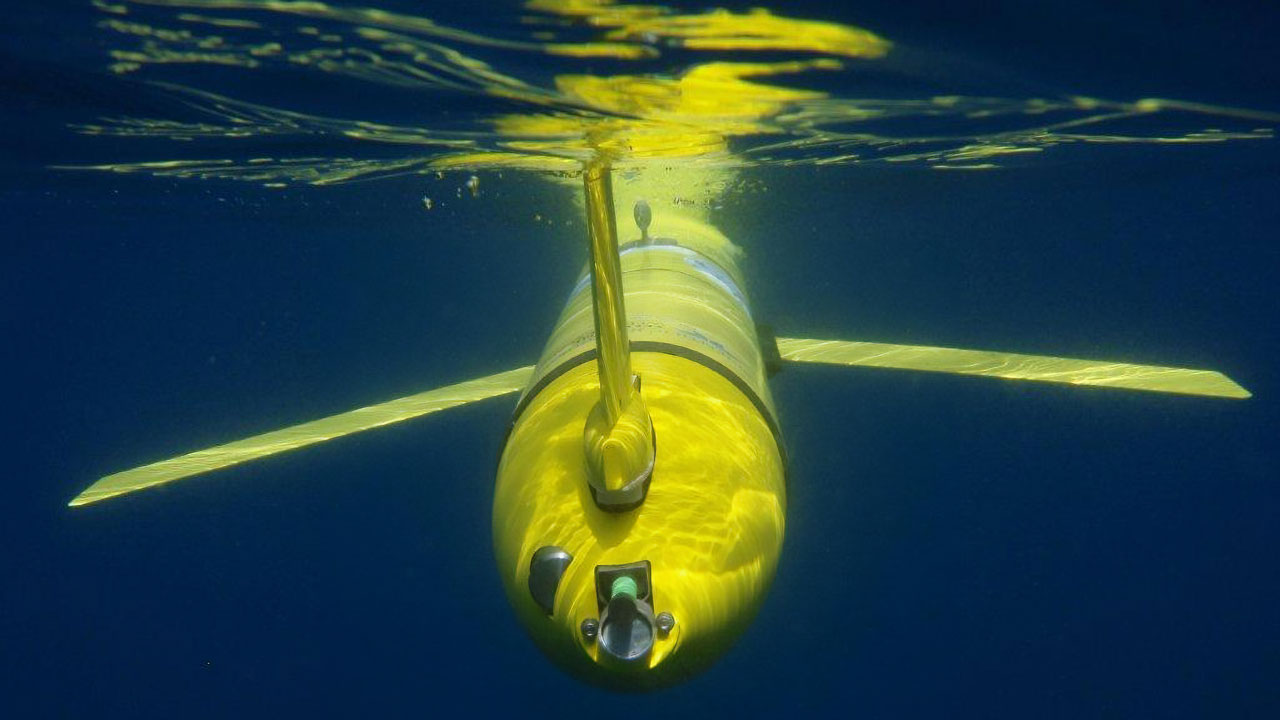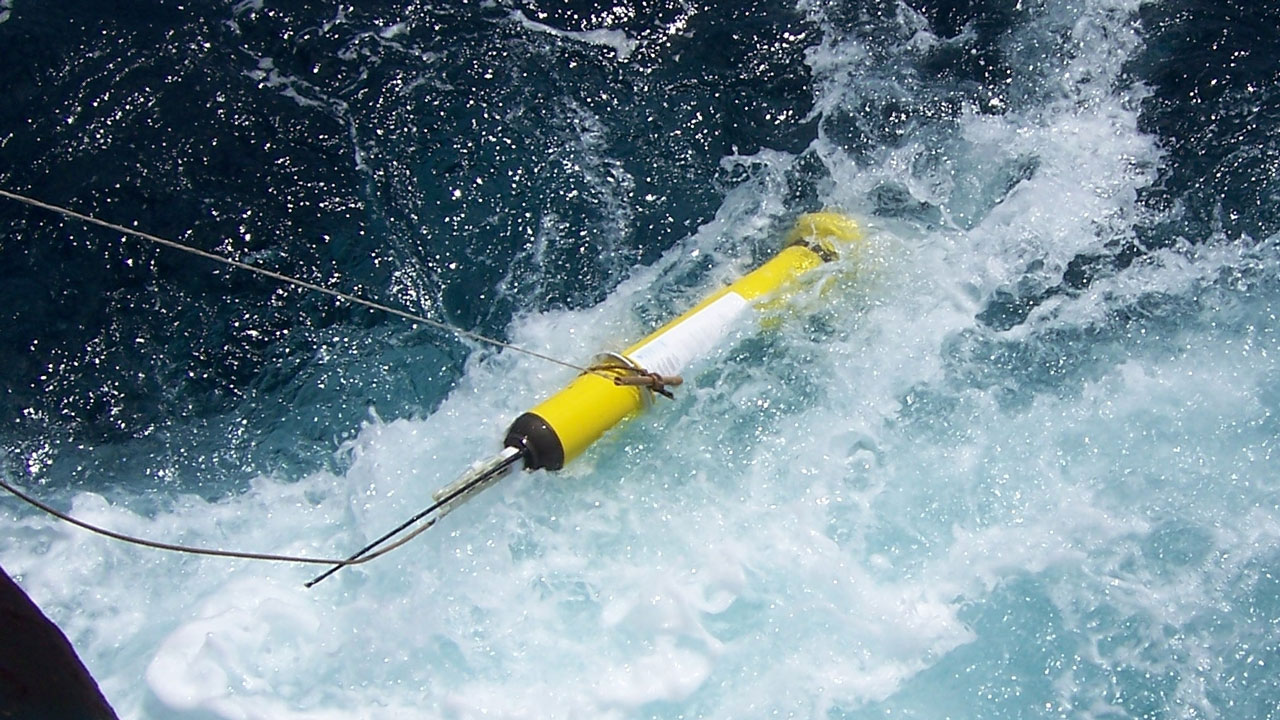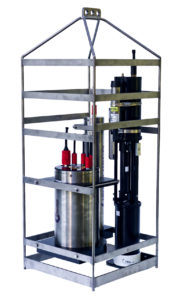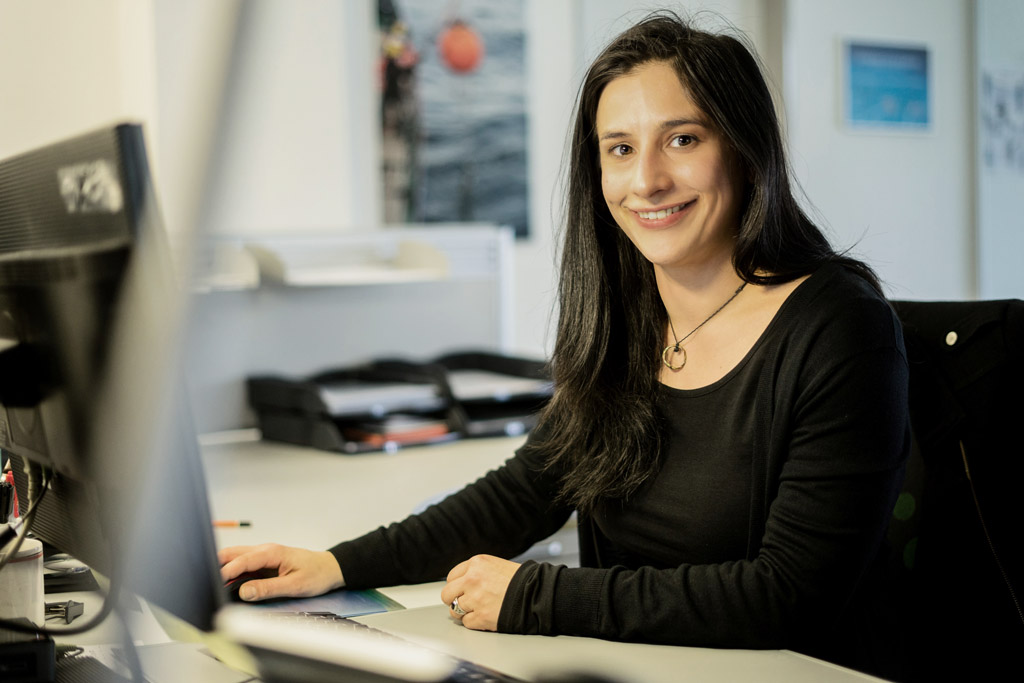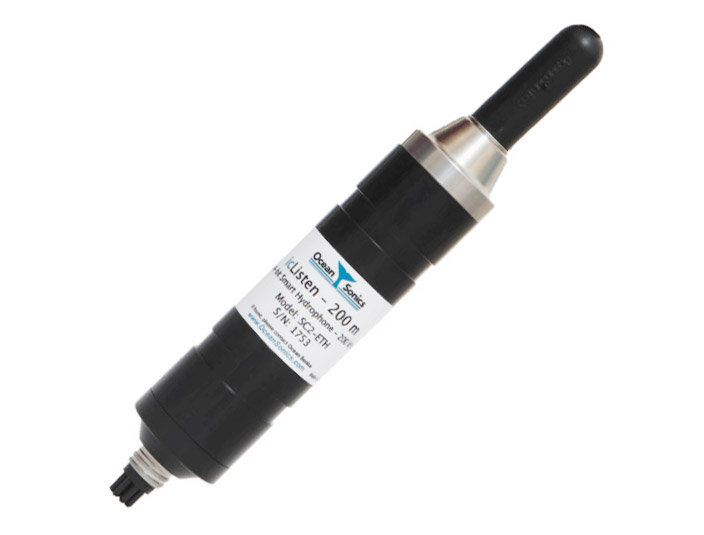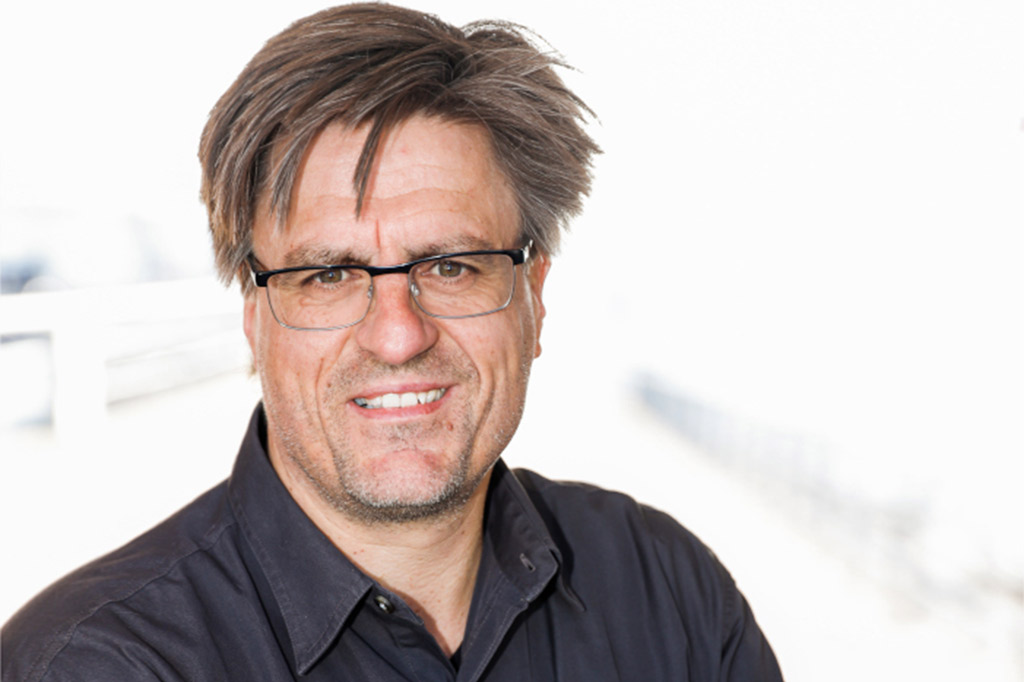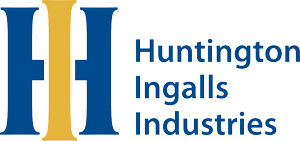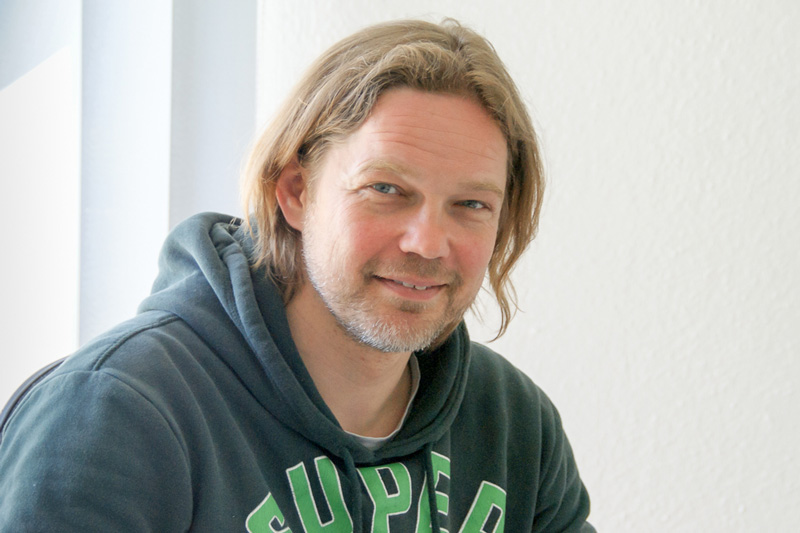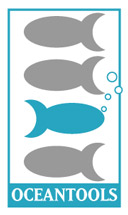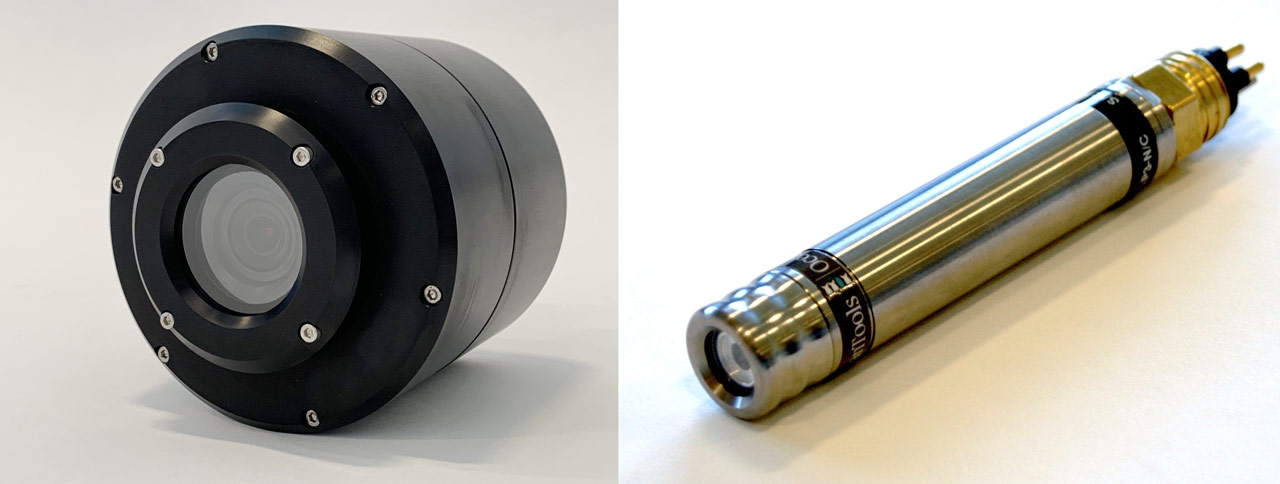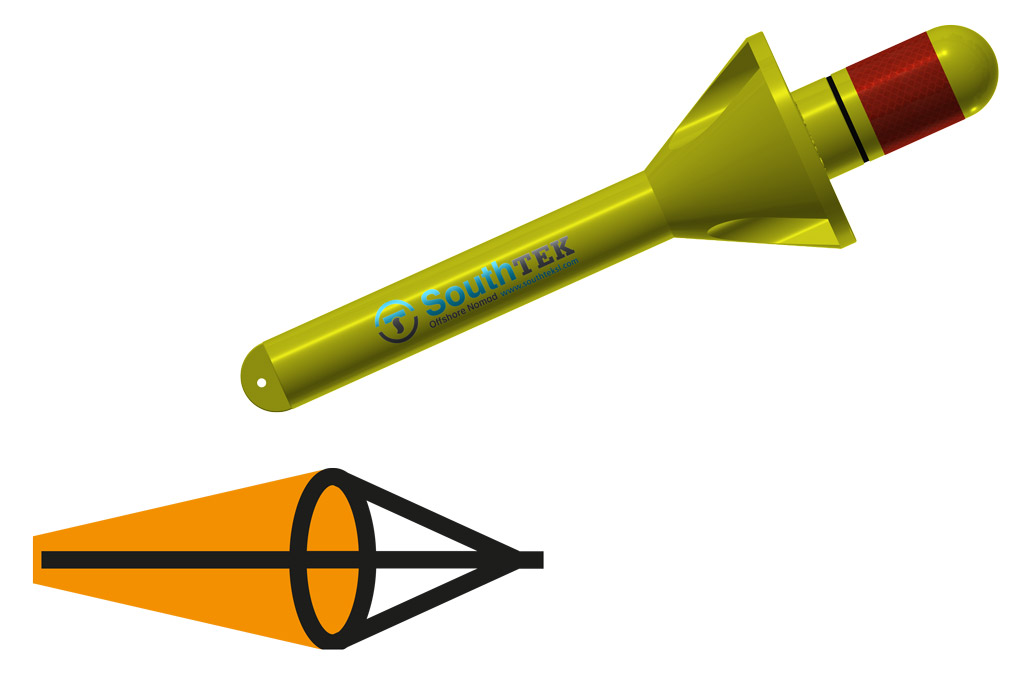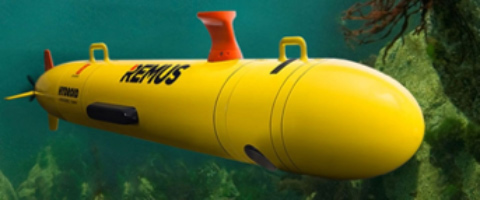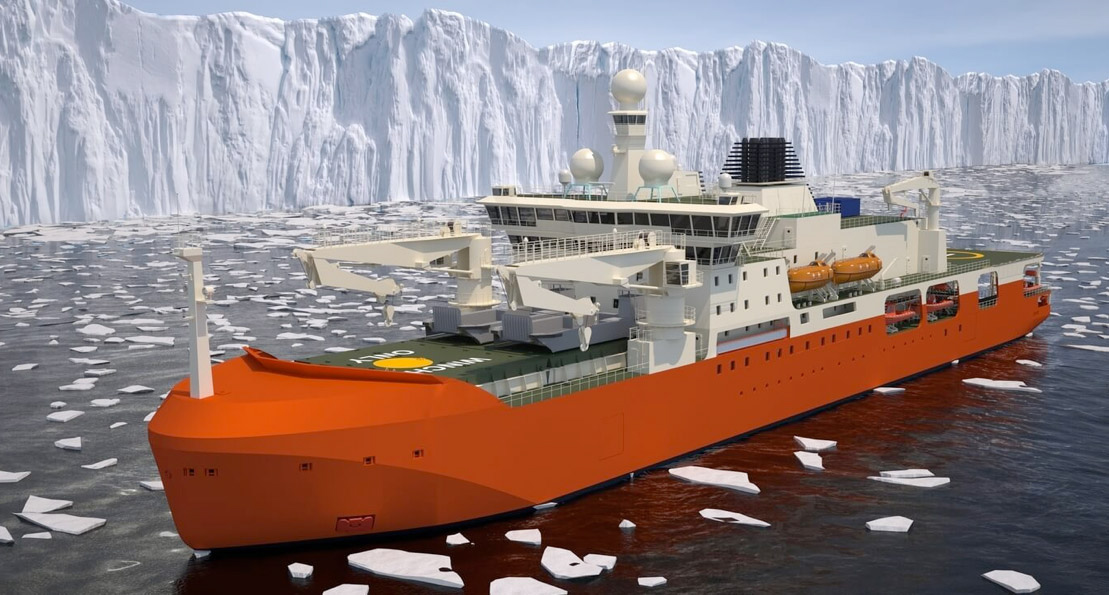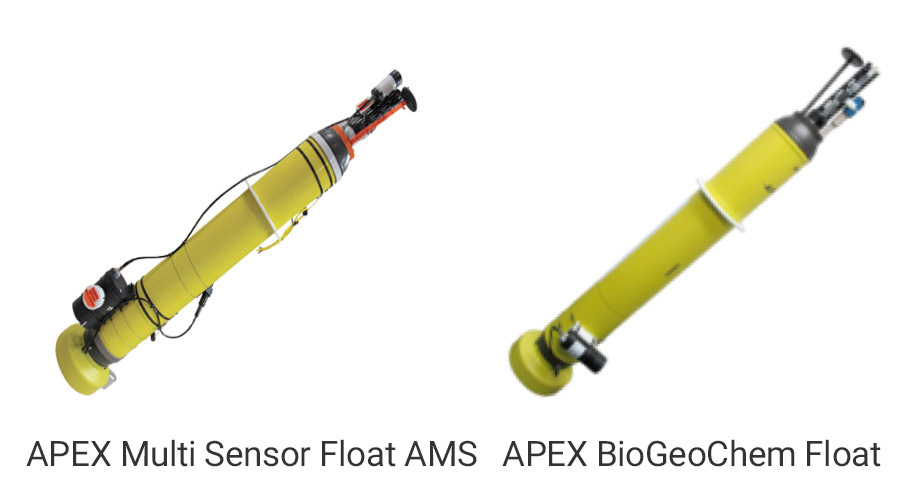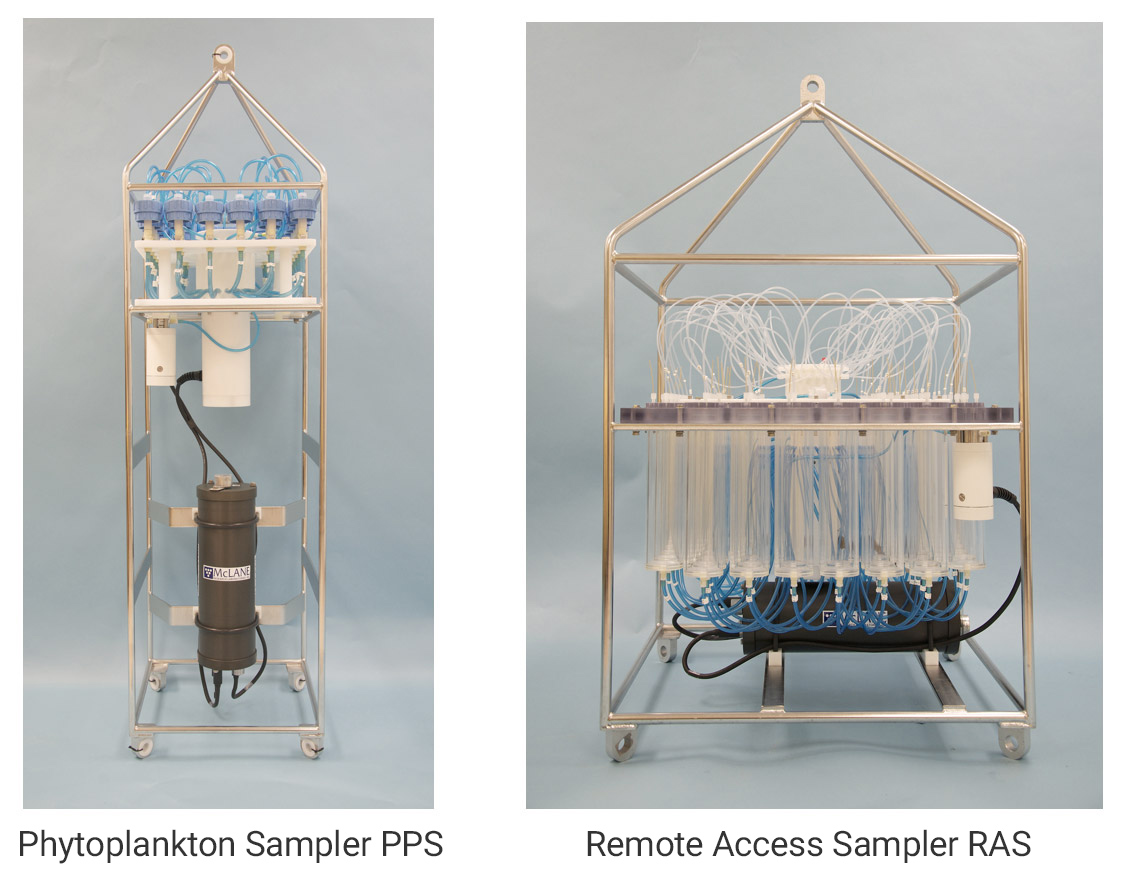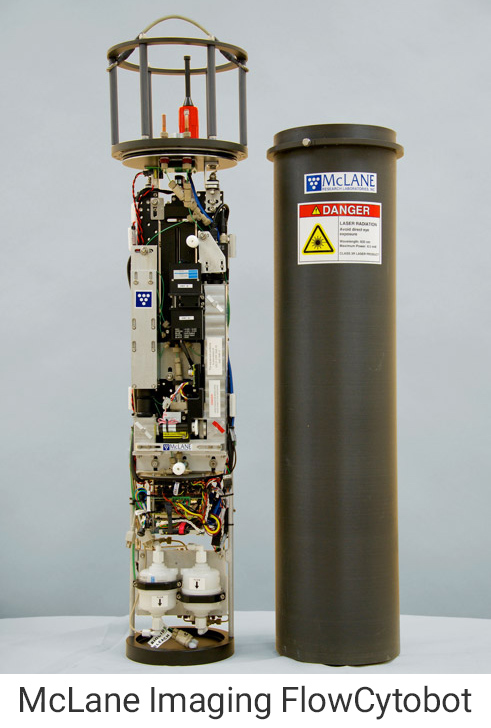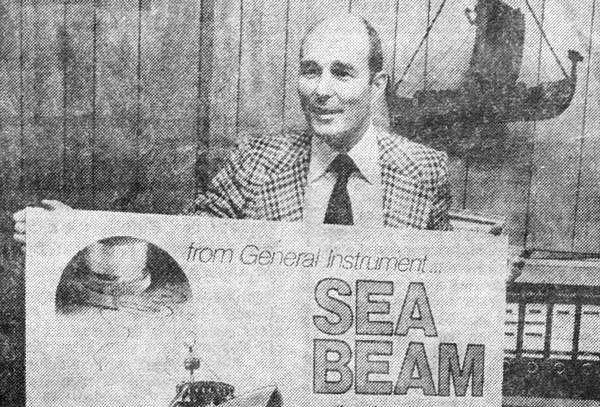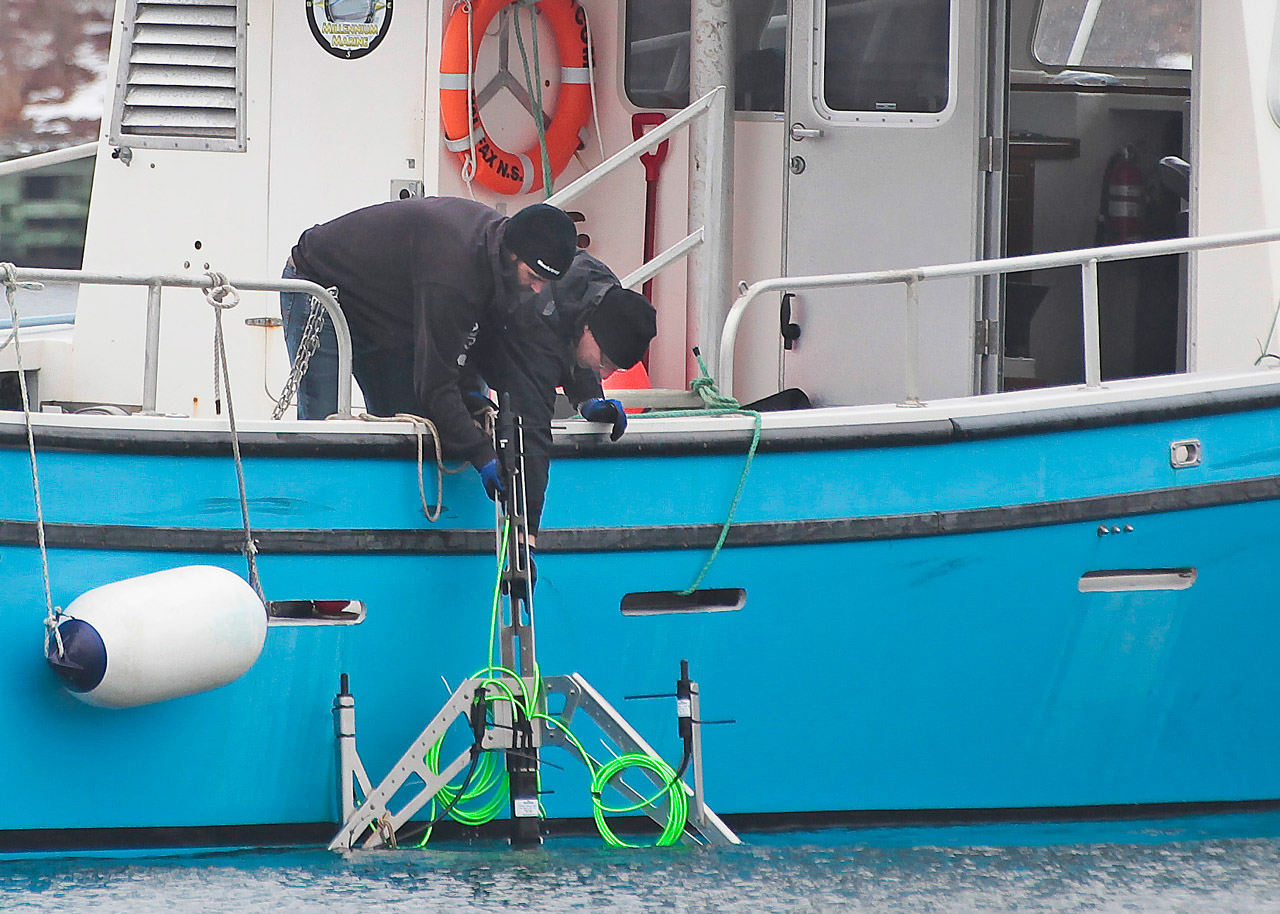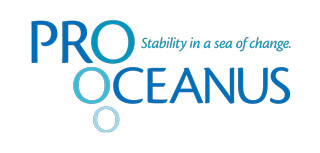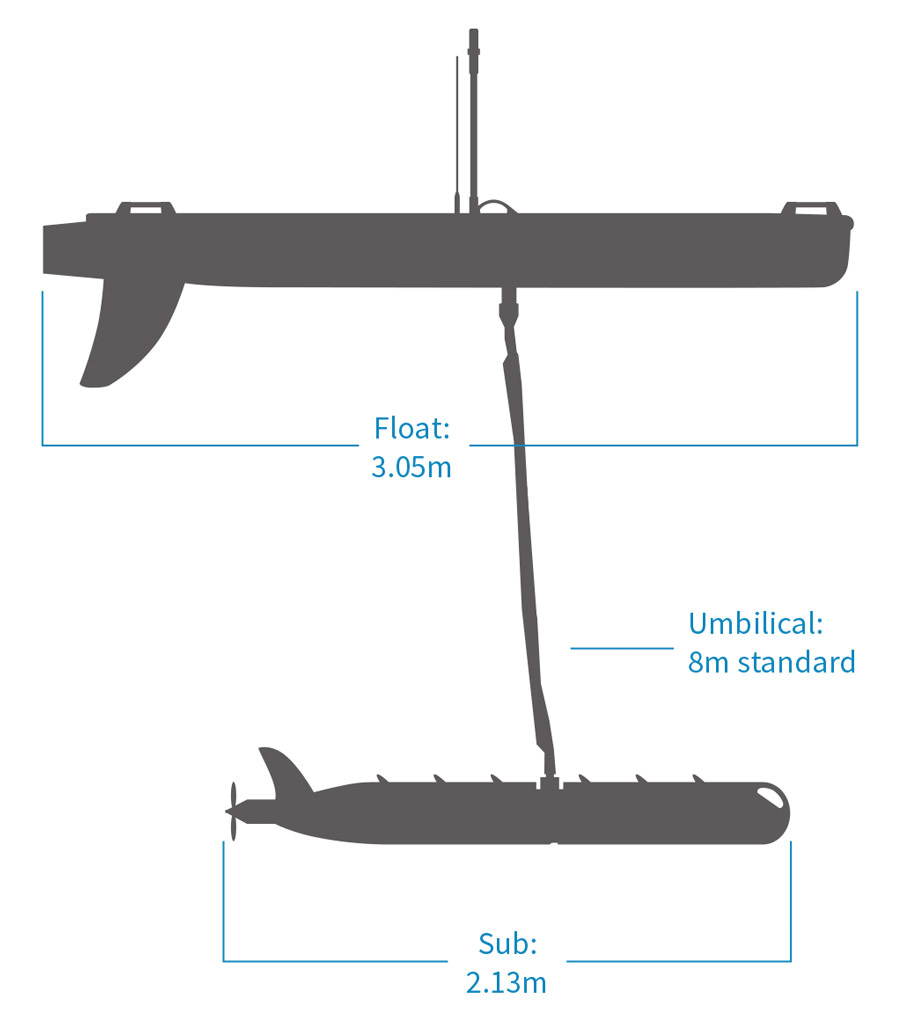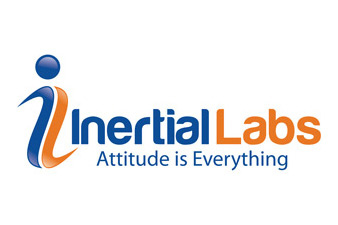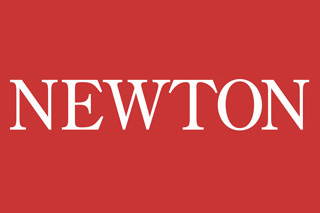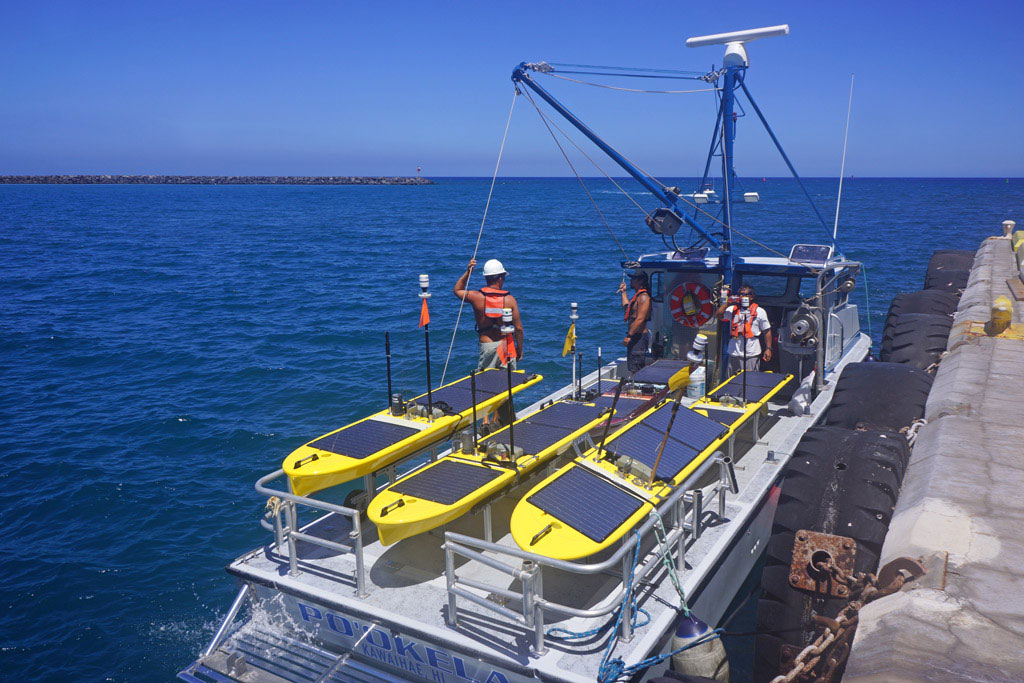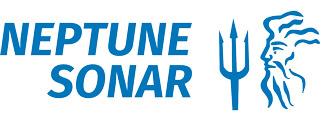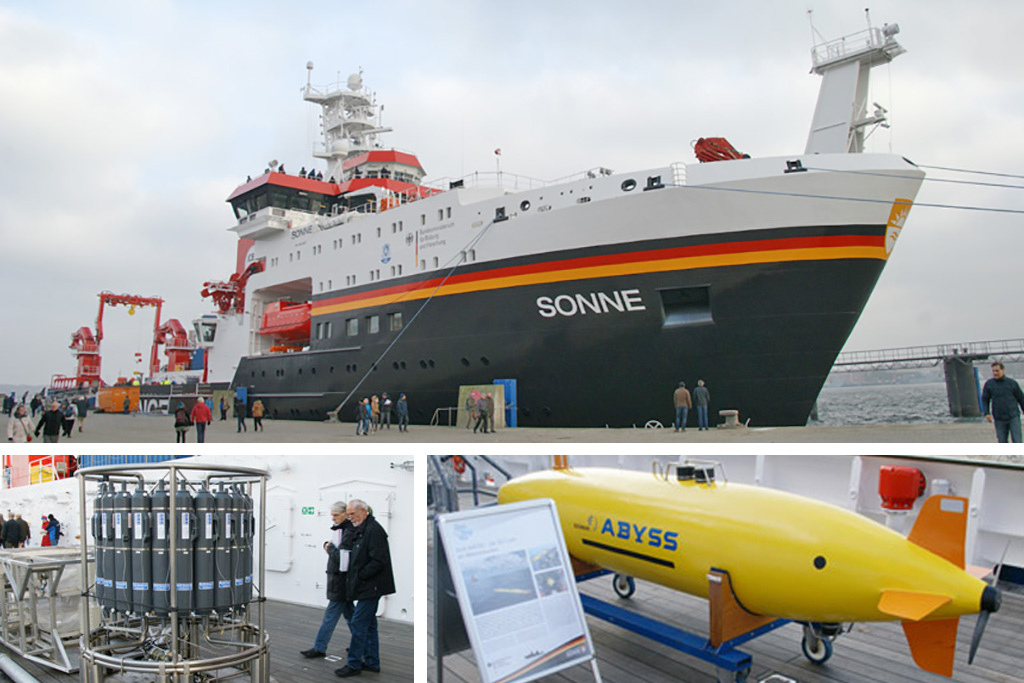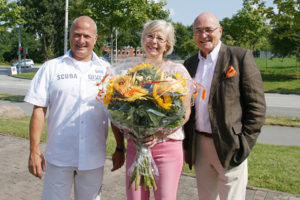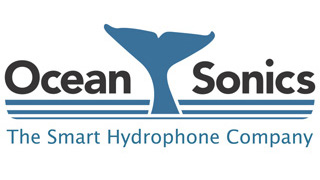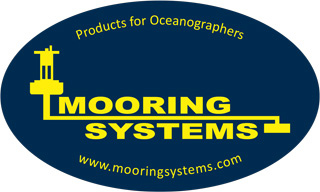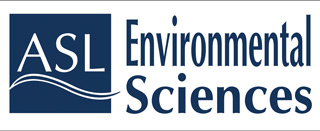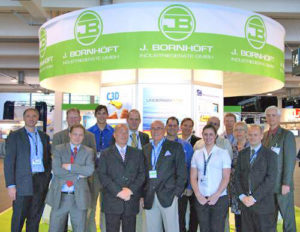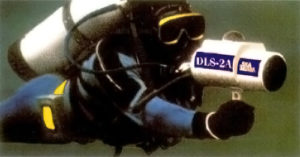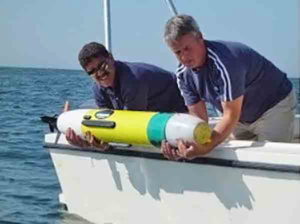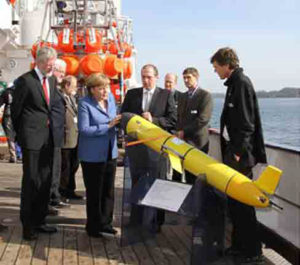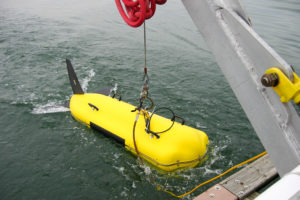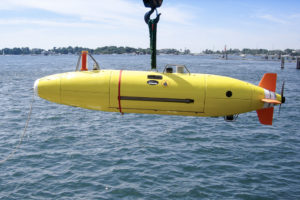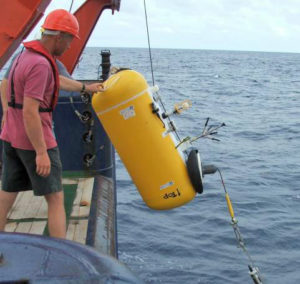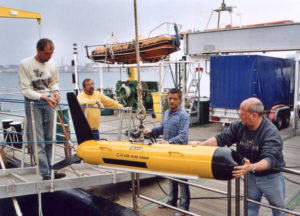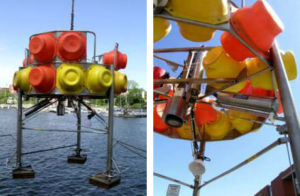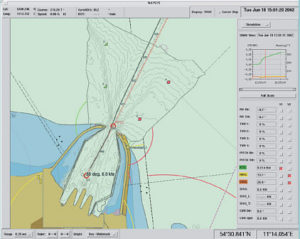McLane – A-DNA Sampler for GEOMAR and AWI
McLane’s new Robotic Cartridge Sampling Instrument (RoCSI) is an autonomous environmental e-DNA sampler that filters seawater in-situ and captures the DNA material from cells or other debris in hard-to-reach marine environments to a depth of 4,500 meters. This device collects water samples in commercially available 0.22 and 0.45 micron Sterivex filter cartridges for later eDNA analysis. It can be used on vehicles or long-term anchoring systems. Both GEOMAR and AWI have secured one of the first systems.
New partner for underwater robots – Video Ray LLC
VideoRay LLC is a ROVs manufacturer. These are characterized by being very reliable, portable and easy to use. They are designed to handle demanding tasks in the field of defense, inspections, search and recovery operations, offshore oil and gas industry, wind turbines. www.videoray.com
The ANB pH sensor is a digital pH sensor. It provides pH, conductivity and temperature measurements and automatic in-situ calibration. Compared to glass electrodes, this sensor can be stored in a dry place and is more robust. www.anbsensors.com
Teledyne Webb Glider
The Helmholtz Center Hereon has ordered three new Slocum Gliders. The autonomous underwater vehicles are intended for long-term deployments and are suitable for investigating physical and chemical parameters in the water column over long distances.
Teledyne Webb Apex Floats Deliveries
Further Apex floats were also delivered this year:
- 3 BioGeoChem floats to the Bundesamt für Seeschifffahrt und Hydrographie (BSH)
- 11x APEX Ice Profiling Floats with ice protection to the Alfred-Wegener-Institut (AWI)
WTD71
Delivery of Sea-Bird Scientific in-situ spectrophotometer with data logger and battery pack.
Based on the venerable ac-9, the ac-s offers almost an order of magnitude increase in spectral resolution of in-situ absorption and beam attenuation. The 4 nm resolution allows for spectral “fingerprinting” and deconvolution analysis.
As Sea-Bird Scientific has discontinued the production of the data logger and the battery pack, two Kiel-based companies were commissioned by Bornhöft Meerestechnik to co-develop a new complete system.
The very constructive cooperation made it possible to build the required package, so that Sea-Bird’s ac-s can once again be offered with data logger and battery pack for new inquiries.
KVH INDUSTRIES, INC. PARTIALLY SOLD
In August 2022, EMCORE Corporation acquired all the intellectual property and outstanding assets and liabilities of KVH’s FOG and Inertial Navigation Systems business segment, including the production facility located in Tinley Park, Illinois. The worldwide net of representatives needs yet to be cleared.
SCIENTIFIC ASSISTANT AT BORNHOEFT MARINE TECHNOLOGY
We welcome Kristina Parplies as new member of our staff ! She acquired her MSc degree in Marine Geosciences at Kiel University and worked during her studies for both the Institute for Geosciences and the GEOMAR Center for Oceanography in Kiel. Kristina will be supporting our sales team and will be contact for our customers and manufacturers alike.
MEASURING NOISE CREATED BY PILE DRIVING NEAR FISH-LADDER
The German Federal Institute of Hydrology (BfG) ordered from us hydro-acoustic measuring equipment to determine the noise level of pile driving under water. The work is performed near fish-ladders at the dam in Geesthacht at the river Elbe and may influence the behavior of fish. We supplied a number of OCEAN SONICS icListen Smart hydrophones with accessories and pertaining software.
OBSERVATION OF AN UNDERWATER WORK PROCESS
The Joint Venture for the construction of the new Lock Chamber Brunsbuettel (KIEL CANAL) asked us to conceive and supply a video system for the observation of specific work under water. Old concrete piles of 1.30m diameter in a 25m deep flooded excavation must be cut short with the aid of divers and a hydraulic pile cracker. This is suspended from a crane and is remote controlled. However, neither the crane driver nor the operator of the hydraulic aggregate can see the work under water. Here is where our 4 video cameras and LED lamps from OCEAN TOOLS come in. They will transmit live images to the surface.
BORNHOEFT COMPANY WELCOMES SCIENTIFIC COLLEAGUE
As of 1 January 2022, Dr. Volker Karpen has joined our team and will be available to you for all questions relating to technical sales. Dr. Karpen comes with a wealth of practical experience in oceanography and is looking forward to working with our customers and industrial partners alike.
OUR PARTNER COMPANY HYDROID, INC. SOLD
Kongsberg Maritime has sold its HYDROID division, manufacturer of the world renowned REMUS AUVs, to Huntington Ingalls Industries. Bornhoeft Marine Technology will remain the exclusive representatives for German speaking Europe regarding REMUS AUVs and have, therefore, renewed the pertaining contracts with Huntington Ingalls accordingly. We look forward to serving our customers as before. www.huntingtoningalls.com.
NEW MANAGEMENT AT BORNHOEFT MARINE TECHNOLOGY
Starting on 1 January 2021, Stefan Theophile has been appointed General Manager. Thorsten Bornhöft, being senior partner, will assist as consultant to the company. You all know Stefan as professional and reliable main contact in his former role as sales engineer for more than 10 years. We are sure that Stefan will continue the established path of the company and are looking forward to many more successful years of cooperation.
OCEANTOOLS NEW IN PORTFOLIO
In the interest of our marine technology customers, we won a new partner company. The manufacturer OceanTools Ltd. from Scotland is famous for equipment successfully used in Offshore operations, such as underwater video cameras, lights, lasers, leak detectors, and various ROV accessories. For details, please refer to www.oceantools.co.uk.
BAUER AG, SCHROBENHAUSEN, BAVARIA, NEW CUSTOMER
The BAUER Group is a leading provider of services, equipment and products related to ground and groundwater. With over 110 subsidiaries, Bauer operates a worldwide network on all continents. Bauer became our first customer for OceanTools products. The contract comprised 13 HD Video Cameras C4-20 with matching LED Lights L-3, and 4 C-Lasers. Our robust Underwater Connectors SUBCONN with connecting cables supplemented the order.
AWI DEPLOYS NOMAD DRIFTERS
SouthTEK Sensing Technologies S.L. recently supplied a total of 44 Offshore Nomad D Drifters to the Alfred Wegener Institute Bremerhaven for experiments at the Arctic ice edge. Positioning of the buoys is by GPS, communication by Iridium and Internet through a so-called LP Manager. An underwater drogue Satis is enhancing the drift capability.
“REMUS” FOLLOW-UP CONTRACT OF THE GERMAN NAVY
The Procurement Authority of the German Armed Forces (BAAINBw), Koblenz, has placed an order for 5 systems of the ”New Generation REMUS 100” underwater drones, after successful operation of 6 REMUS 100 delivered earlier. The vehicle is small enough to be carried by two people, yet contains enough sophisticated sensor, navigation, and power resources to enable it to perform intricate sonar and oceanographic surveys over large areas.
NEW PARTNERS ADDED
Further interesting manufacturers have asked us to look after their interests:
Hydromea SA, Lausanne, Switzerland – are best described as specialists for wireless, optical communication under water, and they are employing this technique among others for the first ever untethered autonomous underwater vehicle (AUV). We are supplying the first two pairs of Optical Modems LUMA 250LP to MARUM in Bremen. www.hydromea.com
Feritech Global Ltd., Penryn, Cornwall, GB – have specialized in geotechnical equipment for sampling the ocean bottom as well as handling of heavy gear on deck as there are winches, LARS, etc. www.feritech.com
is currently building an icebreaking Supply and Research Vessel (ASRV) for Australia which will primarily operate in Antarctica. We supplied a total of 11 ea. digital OCEAN SONICS Hydrophones model icListen. The main equipment is installed in a drop keel to listen and record live whale songs and other marine mammals. Further hydrophones icListen are placed in the hull to record sounds emitted by the ship itself for reference.
has been building profiling floats under the name of APEX for many years. We would like to report about some special orders which will be delivered in the course of year 2019:
To the University of Oldenburg:
4 each APEX Advanced Multi-Sensor Floats (AMS)
2 each APEX BioGeoChem Floats
The floats will be deployed in the Mediterranean Sea and the Atlantic Ocean.
To the Alfred Wegener Institute (AWI), Bremerhaven:
16 each APEX Advanced Multi-Sensor Floats (AMS) with under ice option
(The floats will not surface when there is ice coverage.)
is receiving a total of 9 autonomous, moored, particulate samplers from McLANE RESEARCH LABORATORIES i.e.
- 3 each Phytoplankton Sampler PPS
- 3 each Remote Access Sampler RAS-100
- 3 each Remote Access Sampler RAS-500
Whereas models PPS filter up to 24 individual water samples in-situ, models RAS collect up to 48 water samples for subsequent laboratory analysis.
introduced an innovative so-called Imaging FlowCytobot (IFCB), and two of the first units are going to Germany: One will be operated by the IGB Berlin (Leibniz Institute of Freshwater Ecology and Inland Fisheries), the second will be installed in a Ferry Box of the company 4 H-JENA engineering GmbH. The IFCB uses a combination of flow cytometric and video technology in-situ to capture high resolution images of suspended particles which have been made visible by laser-induced fluorescence. The collected data can be transmitted to shore in real-time and processed automatically with image classification software.
In 1980, we brought the very first multibeam sonar system to Germany and initiated a technical revolution. Large area, precise contour maps of the ocean bottom could be generated in short time and formed the basis for well-aimed work from now on.
The Kieler Nachrichten reported about this sensational event, and SEA BEAM became a generic term with marine scientists.
The manufacturer remarks: Creating digital hydrophone arrays is now simple. Connect two or more icListen Smart Hydrophones together and they self-synchronize, operating as one. Whether using the internal hydrophone memory, or logging multi-channel data externally, you record multichannel array data. The Ocean Sonics approach offers a wide range of geometries, including vertical, horizontal, very small geometrical arrays, or spread out over many kilometers.
Pro-Oceanus Systems Inc. provides world-class technology in our line of advanced dissolved gas sensors. Measurements of dissolved gases in natural waters provide critical information for monitoring biological production, understanding the dynamics of greenhouse gases, surveying the distribution of pollutants, and determining the health of sensitive ecosystems.
In the framework of project MOSES we supplied a Model SV3 Waveglider to the GEOMAR Helmholtz Centre for Ocean Research Kiel in April 2017. The acronym MOSES stands for Modular Observing System for the Earth System and will focus primarily on small scale yet integrating measurements of the system earth. In this context GEOMAR is planning an activity bringing together moorings, bottom landers, ocean bottom seismometers, gliders, wavegliders, and a small swarm of AUVs.
The “Wave Gliders” are manufactured by LIQUID ROBOTICS, INC., Sunnyvale, California, USA, now a member of the Boeing group of companies.
The Institute for Chemistry and Biology of the Marine Environment (ICBM), Wilhelmshaven, has recently ordered an „Inherent Optical Properties Package“, IOP for short, with a variety of sensors from our principals the Seabird Scientific (WET LABs, Inc.) USA. Among others the IOP is equipped with a Spectrophotometer (AC-S), a 3-channel Fluorometer (Triplet), a Backscattering Sensor with 9 different wavelengths (BB9), and an SBE49 CTD.
Inertial Labs, Inc. from Paeonian Springs, Virginia, USA, is a new discovery for our customers and a competent supplier of MEMS based IMUs and INS systems which operate under water as well as on land. They are small, robust, and in spite of their accuracy surprisingly low priced. We look forward to receiving your inquiries! www.inertiallabs.com
Newton Labs from Renton, Washington, USA, is, among other products, the world´s largest supplier of Underwater Scanners. Resolutions of 0.1mm, measurement ranges of up to 5m, and water depths to 4,000m are achieved. Surveys of underwater objects become accurate as never before, and data is easily converted. www.newtonlabs.com
In a joint project with OMAN, the GEOMAR Institute took delivery of the latest model Wave Glider in November 2016. Powered by nature, the Wave Glider® is the only proven unmanned surface robot for real-time ocean data collection and communications over long durations and in varying sea states. Sitting at the surface, the Wave Glider is the essential sea floor to space link creating a network to help solve some of the world’s greatest challenges. The longest distance travelled has been 9,380 nautical miles so far. Especially in developing countries where research vessels are rarely available the Wave Glider opens the way to international participation.
As our former partner, Channel Technologies Group (ITC), changed the field of activity we had to find another and adequate supplier of Hydrophones and Underwater Transducers. Neptune Sonar Limited, Kelk, East Yorkshire, UK, more than matches this product line. We welcome a British manufacturer for a change: http://www.neptune-sonar.co.uk/
Reports from our archives
The youngest German research vessel will primarily operate in the deep sea regions of the Atlantic, the Pacific, and the Indian Ocean. Consequently, she received a.o. two Acoustic Doppler Current Profilers (ADCPs) of the Teledyne RD Instruments OCEAN SURVEYOR series capable of collecting detailed maps of the distribution of water currents along the ship´s path to 1,000m or 700m depth. The phased-array transducers of 38 and 75kHz are installed in the ship´s hull. A “SeaCAT” Thermosalinograph SBE 21 is also working below the waterline. It accurately determines sea surface temperature and conductivity from underway vessels. Data is simultaneously stored in memory and transmitted to a computer serial port, allowing independent data logging and real-time data acquisition. Also on board is a Carousel Water Sampler including a profiling SBE 911 plus CTD with optional sensors of Sea-Bird Electronics. This unit is operated by a deep sea winch and controlled from a deck unit with real-time data display. The vessel can specifically handle heavy equipment like deep-sea AUVs and ROVs. As one example, the autonomous underwater vehicle REMUS 6000 of Hydroid is pictured which was named “ABYSS” by the GEOMAR institute. This, by the way, is the AUV which found the wreck of the AIR FRANCE plane in almost 4,000 m water depth off the coast of Brazil two years after it was lost in 2009. Our photographs were taken during the “Open Ship” of the SONNE at the Ostseekai of Kiel Harbour in November 2014.
When we had moved to our new address Wellseedamm 3, it took some time to get used to the new facilities. But now, on 23 August 2013, we celebrated the formal opening of our new office building with customers, suppliers, and many friends. We counted 139 happy guests who were exchanging pleasant memories while enjoying some good music, food, and drink.
With growing interest in the health of the oceans, and in using the oceans to produce energy, the need to understand and measure human effects on the ocean is rising. Measuring ocean sounds is becoming an important part of meeting new legislation introduced in Europe and North America intended to protect the oceans as development rises. Ocean Sonics makes a new class of product that measures ocean sounds and helps provide greater insight into those sounds, introducing you to a better way to listen in the ocean. ”Smart Hydrophones” add a processor & memory to the digital hydrophone. The data now can have meaning, be processed, streamed or logged in the instrument. The Smart Hydrophone has event detectors that report or log whenever a pre-set of conditions occurs. For details refer to www.oceansonics.com.
As Flotation Technologies, Inc. decided to go out of the buoyancy business by the end of December 2013, we had to look for another potent manufacturer in the interest of our customers. We have known Mooring Systems, Inc. and its founder Peter Clay for many years, and we are pleased to greet him as our new partner. His products enjoy an excellent reputation worldwide. “Welcome on Board!” www.mooringsystems.com
After the Canadian company ASL Environmental Sciences had entrusted us with their exclusive representation, we received a contract covering two “Ice Profilers” for the joint project “Laptev Sea” of GEOMAR and AWI. Ice Profilers are upward-looking sonar devices mounted on the ocean floor to accurately measure and record ice thickness and draft. The instruments are further equipped with sensors for tilt, temperature, and pressure. For details please refer to www.aslenv.com.
The exhibition in Bremen was a good opportunity for scientists and industry representatives to meet at our newly conceived booth. New developments were demonstrated and new ideas were exchanged. In the picture you will find (left to right): Francois Leroy (BENTHOS), Don Bryan (AXYS), Stefan Theophile (J.B.), Darius Miller (Sea-Bird), Thorsten Bornhöft (J.B.), Stefan Steinmetz (EIVA), Joachim Bornhöft (J.B.), Brian Dallas (FLOTEC), Paul Devine (RDI), Angela Gellatly, (WET Labs), Joe Borden (ORE), Jochen Klinke (OCEAN SCIENCE), Gabi Müller (J.B.), Allan Steendahl (EIVA), Doug Bennett (Sea-Bird).
RJE International has been awarded a contract through J. Bornhoeft GmbH to supply twenty-five DLS-2A diver operated sonars to the German Navy for use on mine recovery and subsea salvage. Used by the Explosive Ordnance Disposal (EOD) Divers, the DLS-2A is a non-magnetic diver operated sonar that allows the operator to locate objects as small as a 12 inch cylinder up to 120 yards away. In addition, the DLS-2A has a passive mode that facilitates the recovery of acoustic beacons, similar to the ones used on aircraft “Black Boxes”. Military divers all around the world use the DLS-2A to keep harbors and waterways free of mines. With hundreds in service worldwide, the DLS-2A and DLS-1 trainer sonar are the most commonly used diver sonars in the world.
BWB PLACES ORDER FOR AUV REMUS 100
After elaborate trials by the German Bundeswehr Technical Center for Ships and Naval Weapons (WTD 71) in Eckernfoerde, the Army Procurement Center (BWB) in Koblenz placed the purchase order for six Autonomous Underwater Vehicles REMUS 100 for the German Navy with us. These AUVs are manufactured by the American Company HYDROID. Delivery to the Navy will be over the next 12 months. At the same time, operational training of the military personnel will take place in German waters. The easy to handle AUV is equipped with Side-Scan Sonar and various other sensors. It navigates by transponder interrogation and DVL dead reckoning in a pre-programmed grid to 100 m water depth. The recordings serve for searching mines, lost objects, debris, wrecks or simply topographic ocean floor mapping for hydrographic and scientific applications.
As exclusive representatives of LIQUID ROBOTICS, we would like to draw your attention to a project currently under way: On November 17th, 2011, four “Wave Gliders” were launched on a record breaking journey from San Francisco, across the Pacific Ocean, to Japan and Australia. On their journey, they will build an enormous data set (more than 2.25 million discrete data points) which will be provided free of charge, and in real-time to scientists, educators, students, and the public. The project is named “PacX”. To find out more please turn to the following website: www.liquidr.com.
reports about the successful operation of the BENTHOS Deeptow System C3D during a seven week research mission in the central Indian Ocean on board RV Sonne. Purpose of the cruise was the survey of active and inactive hydrothermal fields and the detailed mapping of the geological subbottom at the Midocean Ridge. The system comes originally equipped with side-scan sonar and bathymetry, Doppler velocity log, bottom tracking, inertial navigation system, transponder navigation, and CTD. A sub-bottom profiler was added later. Data transmission operates via an existing tow cable with fiber optics and conversion to Ethernet. The deck unit comprises Triton ISIS software including mosaicing and bottom classification in post processing. The maximum operational depth is 6.000 m.
She was quite interested in the “Sailplane of the Oceans” which we had supplied. Also in the picture are Prof. Peter Herzig, Director of the Institute, Peter Harry Carstensen, Prime Minister of Schleswig-Holstein, and Jost de Jager, Science Minister of Schleswig-Holstein.
Sidney, British Columbia, Canada, have asked us to look after their interests in our territory. – The robust TRIAXYS Wave Measurement Buoys are in permanent use worldwide, and have dramatically reduced the high maintenance cost of known buoys thanks to solar energy. Measurement intervals for wave height and direction, and other parameters, can be programmed. Data is recorded on internal data logger, processed, and after quality control transmitted via radio, cellular or satellite telemetry. The TRIAXYS sensor unit is comprised of three (3) accelerometers, three (3) rate gyros, a fluxgate compass, the proprietary TRIAXYS Processor and a sea surface temperature sensor. The resolution of the buoy motion in three dimensions (six degrees of freedom), provides more accurate measurements. Ten solar panels and four batteries warrant yearlong uninterrupted operation.
At the beginning of 2008, three German institutions successfully started operating new towed BENTHOS Sonar Systems combining wide swath bathymetry, side-scan sonar, and sub-bottom technology. Supplemented by patented sonar imaging, the systems deliver a 3-dimensional look at the seafloor with unprecedented resolution. Whereas the research center FWG chose the Model 1625, the test center WTD 71, and the IfG of the University Kiel both use the Model C3D. All sensors are housed in the same tow body so that they look identical from the outside. Please contact us and/or the website of the manufacturer for technical details.
The German Research Foundation (DFG) has placed the order for an Autonomous 6000m Underwater Vehicle (AUV) with HYDROID, the U.S. manufacturer represented by us. The System was delivered to the Leibniz-Institute for Marine Sciences IFM-GEOMAR, Kiel, in October 2008. The contract worth approx. USD 3.2 Million is the largest single order received in our 30 year company history. The underwater vehicle REMUS 6000 is 3,84 m (12.6 ft) long, has a diameter of 0.71 m (28 in), and weighs 862 kg (1900 lbs) in air. Subject to speed and sensor configuration, the autonomous mission duration can be up to 22 hours. Launch and recovery from a research vessel is accomplished with the aid of a special hydraulic frame (LARS). The instrument package comprises a.o. swath bathymetry, side-scan sonar, sediment profiler, ADCP, CTD, optical sensors, photo cameras, and navigation equipment. The system is stored and transported in two 20 ft containers allowing deployment from various research vessels.
The Institute for Hydrobiology and Fisheries Sciences recently accepted delivery of a remotely operated underwater vehicle (ROV) of Sub-Atlantic, Model MOHAWK, for 1000 m water depth. Supplemental to the original Color and B/W Video Cameras of the ROV, we supplied an IMAGENEX Scanning Sonar, an RDI ADCP, a SEA-BIRD CTD, an AANDERAA Oxygen Sensor, and an ORE Tracking System for acoustic positioning, which were integrated in a Survey Skid. Our service company Oktopus added a special, fast Photo Camera System allowing high-resolution biological takes. In view of the many instruments to be connected, fiber-optic telemetry was chosen. The first field deployment in the North Sea was a great success.
reports about the deployment of a McLane Moored Profiler MMP in the tropical Atlantic approx. 5°N, 23°W. The sensor platform is the core element of a 4210m deep mooring carrying among others an RDI Long Ranger ADCP and two Sea-Bird MicroCats for reference. The motor driven MMP Profiler is crawling slowly up and down the mooring wire measuring various parameters on its way between 100m and 1000m water depth.
After successful trials of the system in the bay of Kiel in spring of 2004, we are delivering the first combined side-scan sonar and bathymetry system model C3D to the German Navy Research Center (FWG) in 2005. The modular design is allowing them to employ this new, patented high-resolution technique on AUVs or towed from research vessels. The topside processor is connected via Ethernet, and there are additional interfaces for optional external sensors.
In May 2005 we delivered a 6,000m Digital Photo Camera System to the Leibniz-Institute of Marine Sciences in Kiel. The Camera System, which was designed by Ocean Imaging Systems, has a resolution of 6.1 Megapixel and is completely built from Titanium. It will be used for the first time in June of 2005 during Alkor Cruise 259 on a lander in the North Sea.
stands for “Assistance System for Safe Shiphandling”. It is a development of the University Rostock, Institute of Automation Technologies, funded by the German Ministry for Research and Technology (BMBF), to monitor environmental parameters like ocean currents and wind influencing the navigation of large vessels in narrow sea corridors and harbor approaches. Target of the development is the avoidance of collisions. The first system was installed at the ferry harbor of Puttgarden in the Baltic Sea. The ocean currents are constantly measured by an RDI Horizontal ADCP 300kHz with a range of approx. 300m. The instrument is mounted on a jetty wall at the entrance of the ferry harbor. During the trial phase, additional measurements were taken by an RDI Vertical ADCP on the remote controlled catamaran MESSIN® which can cover large areas in great detail. The measured current data is transmitted to the vessels by the AIS transponder system and integrated into the ECDIS system on the bridge of the ferry.




